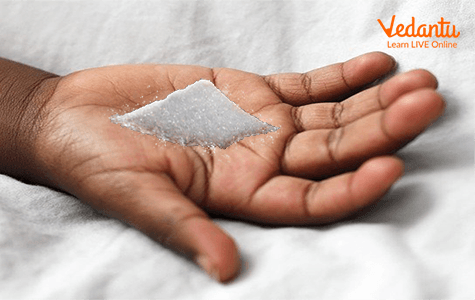




What is Quantity in Maths?
In basic terms, quantity is the amount or the number of something. We also define quantity as an amount, number, or measurement. It answers the question 'how much?'.
Quantities can also be understood as numbers; for example, this book has 55 pages or the container has ‘x’ quantity or the number of black pens. The numbers via which we express quantities can be expressed as time, weight, distance, and so on.
This page will help you understand what quantity is. Also, you will get to know real-life examples of quantity.
Example of Quantity
In a Maths equation, a quantity is a number or variable and any algebraic combination of other quantities. For example, in an equation x + 6 = 15, there are four quantities represented: 6, 15, x, and the sum of x and 6, i.e., x + 6.
Miscellaneous Examples of Quantity
One day, Neha went to a nearby village to purchase some amount of sugar. Assume that she purchased 20 packets of sugar and found something fishy. However, she went to a nearby shop and got it measured. She found out that it was 16 packets of sugar and took a photo of the measurement.
The next day, she went back to the village and showed the proof of the false weight he made yesterday. So, he came to know that it was 16 packets of sugar and apologised for not repeating the mischief again.
So, here 20 packets of sugar are the false quantity, 16 packets of sugar is the exact weight. However, the difference comes out to be 20 − 16 = 4 packets of sugar.
Thus, the shopkeeper made a profit of 4 packets of sugar.
One day, Shreyas bought some amount of rice from the Shopper’s Street Supermarket and forgot to ask for the quantity and made the payment. When he reached home, his mom asked the weight of the rice. By weight, she means the measurement of rice.
Here, the weight is the amount of rice and we call this amount the quantity of rice that Shreyas bought from the Shopper’s Street Supermarket.
Rohini and Niharika visited a new Cafe named “Sweetie Pie Cafe” and they found that place was full of lightning and freshness. They ordered a coffee; however, it didn’t taste good. So, Rohini asked for “a handful of” sugar from the waiter.
Do you know what “a handful of sugar” means? Well, a handful means the quantity of sugar.

A Handful of Sugar
Q. What would happen if we add 3560 glasses of company A to 1200 glasses of company B?
Well, on adding the numbers 3560 and 1200, we get 4760. Here, assume that you find a container filled with 4760 glasses of companies A and B at Sky shop, so here, 4760 glasses are the quantity of glasses A and B in a container.
So, this is how you can understand what quantity is. You can relate this concept to objects in your surroundings. This is how Maths becomes easier to understand.
FAQs on Quantity - Definition and Solved Examples
1. What quantity is currently present in a jar when you have taken out 50 ml milk from 150 ml milk present?
Original quantity of milk is 150 ml.
The amount of milk taken out is 50 ml.
The present quantity of milk = Difference in original quantity − The quantity taken out
= 150 − 50 = 100
Hence, the present quantity of milk is 100 ml.
2. How can we describe quantity with Mathematical operators?
Following Mathematical relational operators can be used to describe a quantity:
> Greater than sign
For example, 15 kg of salt > 5 kg of salt
≥ Greater than or equal to
x + 7 = 10 and x = 5
Here, x = 3 and 5
y + 6 = 9 and y = 2
y = 3 and 2
Here, while comparing x and y, we see that x ≥ y.
< Lesser than
20 kg of apples < 26 kg of apples
≤ Lesser than or equal to
x + 7 = 9 and x = 5
Here, x = 2 and 5
y + 6 = 9 and y = 2
y = 3 and 2
Here, x = 2, y = 3, so x < y, but x = 2 and y = 2, so x ≤ 2.
= equal to
x + 8 = 10 => x = 2 and y + 9 = 11 => y = 2
So, here x and y = 2, so x = y.
≠ Not equal to
For example, x = 9 and y = 10, so x ≠ y.











